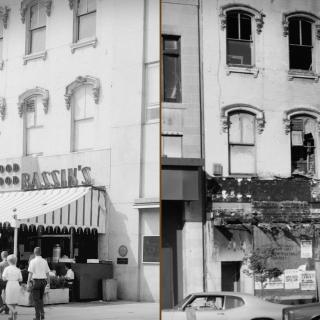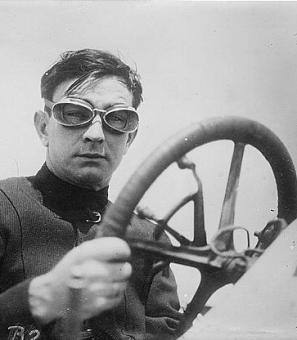The Disappearing Corpse of D.C.'s First Murderer
Washington was unprepared for its first murder trial in 1802. The trial took place in the Capitol building, for want of a courtroom, and the murderer was held in a temporary jail in an alley dwelling on 4 ½ street. All around, it turned out to be a difficult event for the city, but let’s start at the beginning.
Patrick McGurk was an Irish immigrant who lived on F Street, between 12th NW and 13th NW. He worked as a bricklayer and had a serious drinking problem. As too often is the case, his wife suffered from his bad habit. In the summer of 1802, McGurk beat his wife so badly that she and their unborn twins died. After being convicted at trial, D.C.’s first murderer was sentenced to hanging. According to one account, McGurk’s execution was stayed for a few months by none other than President Jefferson, through legal wrangling by McGurk’s counsel.
August 18, 1802, the execution finally took place. A gallows was erected at the foot of Capitol Hill, between Pennsylvania and Maryland Avenues. What transpired next was recorded by eyewitness Christian Hines: McGurk told the priest, “When a man’s character is gone, his life is gone,” and, rather than waiting for the executioner, jumped off the platform himself with the rope around his neck. The startled onlookers tried to pull him back onto the platform, where they weren’t able to keep a grip on him and he jumped again. Someone finally cut the rope but it was too late; McGurk fell to the ground dead. The first to be executed in D.C. bypassed his execution.
People in the audience took bits of the noose home, as superstitious cures for headaches or toothaches, and McGurk’s body was carted off to Holmead’s cemetery, located at that time at 19th Street and T Street, NW. This is when the shenanigans began.
Relatives of the residents in Holmead’s were furious a murderer was being interred beside their loved ones, especially the relatives of a young woman who had the dubious honor of being McGurk’s neighbor. A posse of sorts was rallied and the Irishman’s body was unceremoniously dug up and reinterred in a ravine nearby. Friends of McGurk, after learning about the move, met together in secret to return the body under cover of darkness. After it came out that the body had been moved back to Holmead’s, the original group raised an even bigger fuss. They dug up McGurk again and buried him in a spot of wilderness in the still-new city, confident that the body could not be found again.
And indeed it wasn’t found again for forty years. In the 1840s, a servant (or perhaps a slave) of one William O’Neal was digging a post-hole when his shovel hit the remains of what was identified as McGurk’s coffin. Only the skull was recovered, though it’s unclear what was done with it. So until the skull turns up at the Smithsonian for some reason, that is probably the end of the curious case of D.C.’s first murderer, from a trial in the Capitol to a botched execution to a disappearing corpse.
Sources
Bryan, Wilhemus Bogart. A History of the National Capital from its Foundation Through the Period of the Adoption of the Organic Act. (New York: The Macmillian Company, 1914).
Hines, Christian. “Early Recollections of Washington City.” (Washington, D.C.: Junior League of Washington, 1866).
Hansen, Stephen A. “History of Dupont Circle: Center of High Society in the Capital.” (The History Press: 2014.)







![Sketch of the mythical fuan by Pearson Scott Foresman. [Source: Wikipedia]](/sites/default/files/styles/crop_320x320/public/2023-10/Goatman_Wikipedia_Faun_2_%28PSF%29.png?h=64a074ff&itok=C9Qh-PE1)












